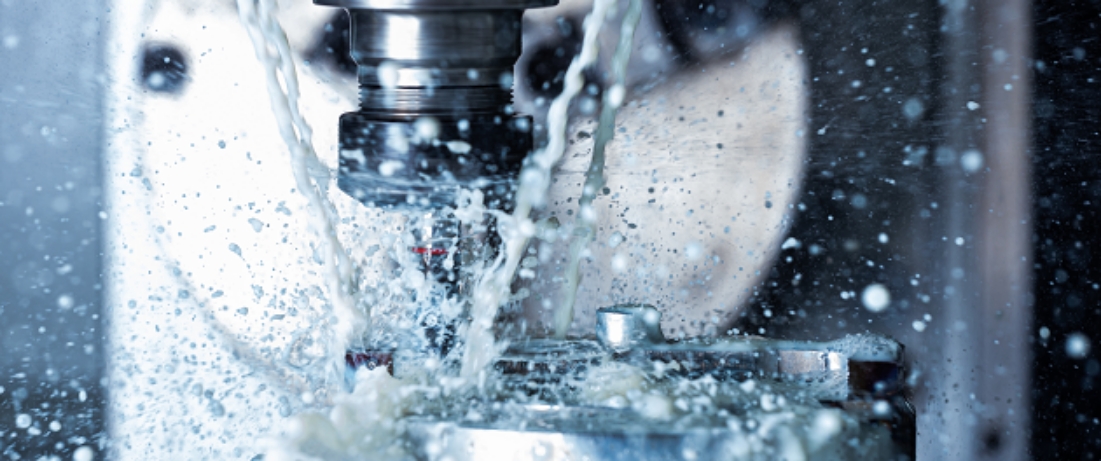
What Causes Oil Mist?
Oil mist is generated during the operation of machine tools that use cutting oils or fluids. This occurs during processes such as high-pressure oil supply, high-speed cutting, and grinding. Oil mist typically exists as fine particles suspended in the air, which can have negative impacts.
Effects of Oil Mist
- Health Impacts: Inhalation of oil mist or contact with eyes and skin can lead to respiratory diseases, eye disorders, skin irritations, and headaches.
- Environmental Impacts: Oil mist negatively affects the workplace environment, leading to issues such as slippery floors that can cause accidents, and the risk of fire and explosions due to oil vapors. Increased ventilation requirements can lead to higher energy consumption and potential malfunctions in air conditioning systems.
- Mechanical Impacts:
- Machinery and equipment used in manufacturing can also suffer adverse effects
- Oil contamination can cause short circuits in electronic devices.
- Corrosion of metal and resin components can affect the precision and lifespan of machines.
Why Use an Oil Mist Recovery Machine? (i.e. Oil Mist Collector / Oil Mist Treatment Machine / Oil Mist Separator...)
An oil mist recovery machine is designed to eliminate the oil mist generated during the operation of machine tools. Implementing such machines can enhance factory environments by:
• Protecting employee health
• Preventing accidents caused by slips and falls
• Reducing employee turnover
• Increasing work efficiency and productivity
If left untreated, oil mist can pose risks to both human health and the environment. Therefore, it is crucial to remove oil mist before it spreads throughout the factory. Additionally, oil mist that settles on surrounding machines and equipment can lead to malfunctions and unnecessary problems.
| Types of Oil Mist Recovery Machines | |
| Cartridge Filter Note 1 |
The most common type, which filters oil mist through a filter element and expels the collected mist via a hose. Advantages: Simple structure, relatively low initial cost, easy on-site management, and high safety. Disadvantages: Neglecting filter replacement can lead to blockages, increased power consumption due to higher airflow resistance, and used filters become industrial waste. |
| Cartidge-free Filter Note 2 |
Utilizes collection units instead of filters to gather oil mist, reducing operational costs and maintenance. This includes types that use rotating discs or centrifugal separation. Advantages: Less filter material needed, easier maintenance and installation, and more compact design to install on the top of machine tool. Disadvantages: Difficult to collect fine oil mist particles (less than 1μm). |
| Electrostatic Precipitator Note 1 |
Uses high voltage to create "corona discharge," charging incoming oil mist particles, which are then collected by charged plates. This type can effectively capture fine particles, even those smaller than 1μm. Advantages: High collection efficiency, reusable electrodes, and no filter replacement needed. Disadvantages: Higher cost, careful handling required due to high voltage, and maintenance can be time-consuming and costly. |
Note 1. <Cartridge Filter Type> Onikaze Heavy Smoker (HVS). Its biggest feature is that it comes standard with a final filter that can collect oil smoke, so it can collect not only mist but also oil smoke. In addition, its unique segmented oil mist collection structure reduces the disadvantage of easy clogging of general filter-type oil mist collectors.
Note 2. <Cartridge-free Filter Type> Smart Mist Magic (SMG-R) Through centrifugal separation technology, it can prevent oil mist, debris and sludge from accumulating inside, thereby achieving the possibility of long-term operation. No troublesome drainage pipes are required. In addition, through the same efficiency motor, power consumption can be reduced by about 50%, which helps save energy. For special occasions where finer oil mist needs to be collected, a higher performance post-filter (filtration efficiency 0.3μm@99.93%) can be provided.
| ⊙Installation Methods: The installation method varies based on the type of machine tool | |
| Direct Air Intake |
Used primarily for CNC lathes, machining centers, and multi-tasking machines with enclosed processing areas. The specifications and dimensions of the oil mist recovery machine are selected based on the machine's processing chamber size and cutting conditions. |
| Local Air Intake |
Commonly used for general lathes and grinding machines where the processing area is not sealed. The hose should be positioned near the cutting tool to effectively capture the oil mist. |
| Wide Area Air Intake |
Implemented when direct or local air intake methods cannot effectively capture all oil mist. This involves installing air conditioning systems with oil mist collection capabilities or distributing small oil mist collection devices throughout the factory. Through ventilation, a certain amount of oil mist in the factory will flow outside, so there is also the problem of contamination to the outside of factory. Therefore, it is best to adopt a combination of "direct air intake + wide-area air intake". |